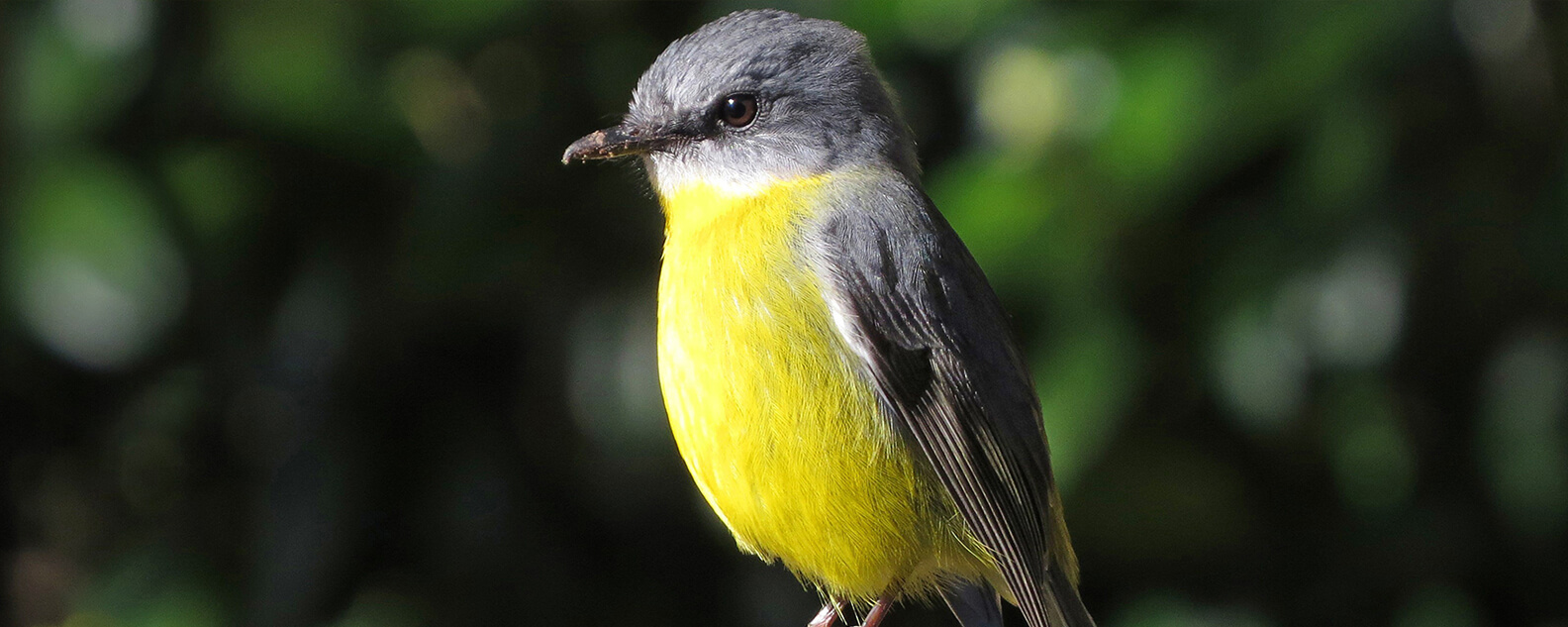Winter birds in the Blue Mountains
Winter in the Blue Mountains bushland is a bit like the fabled pie which, when opened, contained four-and-twenty singing blackbirds. You might not expect it to be full of life. The morning frost lies thick in the hollows and encrusts the foliage of ferns; fingers and noses go numb.

Winter in the Blue Mountains bushland is a bit like the fabled pie which, when opened, contained four-and-twenty singing blackbirds. You might not expect it to be full of life. The morning frost lies thick in the hollows and encrusts the foliage of ferns; fingers and noses go numb.
Birders more familiar with northern hemisphere patterns might imagine that most of the birds will have departed and winter will bring a relative silence to the forests. Nothing could be further from the truth.
Winter is a time of abundance for nectar-feeding birds. Take a walk in any of the clifftop areas of the upper mountains at this time of year and you’re likely to find many honeyeaters.
A great migration
Big, noisy Red Wattlebirds are most obvious, along with smaller species such as the New Holland, White-naped and Yellow-faced Honeyeaters.
Many of these have migrated from further south to spend winter feasting in the flowering banksias here, in some years gathering in amazing concentrations.
They are joined by Eastern Spinebills and other small honeyeaters as well as flocks of tiny Silvereyes which have flown all the way from Tasmania.

A New Holland honeyeater on protea at the Blue Mountains Botanic Garden Mount Tomah. Photo by Carol Probets.
Feeding frenzy
Of all the nectar-bearing plants in the sandstone country, none create such a frenzy of bird activity as the banksias, and winter is the time they’re at their peak with at least four species flowering.
At the Blue Mountains Botanic Garden Mount Tomah, the winter nectar flow is augmented by plants from other continents with the South African proteas especially loved by our honeyeaters. Here, boisterous Little Wattlebirds vie for dominance with the Reds.
The honeyeaters as a group are naturally feisty birds, constantly chasing each other as they compete for the best flowers. They’re also often the birds to give the alarm when a raptor flies over.
By recognising their ‘hawk alarm’ calls you can be alerted to the presence of a sparrowhawk, goshawk or Peregrine Falcon soaring above.

Satin bowerbirds can be seen throughout winter. Photo by Carol Probets.
Echoes of nature
Winter is also the time the valleys echo with the extraordinary song of the Superb Lyrebird as the males strut and dance and display their magnificent tails, all in the hope of impressing the females enough to achieve a mating…or three.
By August, many a solitary female will be incubating her single egg in the elaborate nest she has built herself. The mature males will then moult their tail feathers and go quiet, and younger males will take over the display mounds and the spotlight for a few weeks.
When 200 Yellow-tailed Black-Cockatoos fly over at once, the sight and sound is breathtaking. It's a common belief that flocks of Yellow-tailed Black-Cockatoos signal rain, but here we see them regardless of the weather.
Large flocks are a normal feature of winter as they gather at rich feeding areas, like the heathlands where they find banksia and hakea seeds. Their powerful bills ensure they have no problem cracking open the hard woody cones to get at the seeds inside.

Bassian thrush flock to the Blue Mountains Botanic Garden Mount Tomah. Photo by Carol Probets.
Nesting in cool climates
Other species which congregate in winter flocks include Satin Bowerbirds, most of which are green immatures, and Pied Currawongs. A big flock of currawongs calling together on a cold windy day is a memorable sound, evocative of winter and the mountains.
As we pass the winter solstice the days will grow longer and we’ll start to hear more birdsong. The species which don't migrate can get a head start on breeding. Magpies, thornbills and fairy-wrens, for example, may start nesting as early as July. So does the Bassian Thrush with its perfectly camouflaged plumage blending into the rainforest floor.
And every morning before sunrise the song of its famous relative, the introduced Common Blackbird, will ring out from gardens across the mountains showing us how its English forebears inspired a nursery rhyme.
Who would imagine that one of Australia's most renowned cool-climate regions could be so full of birdlife in its winter months.
Get bird watching
Visit the Garden to see magnificent birdlife among breathtaking walking trails, plant displays and natural areas.